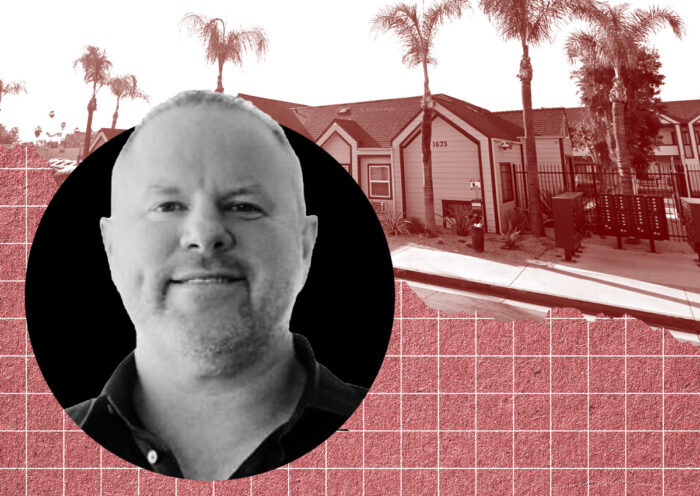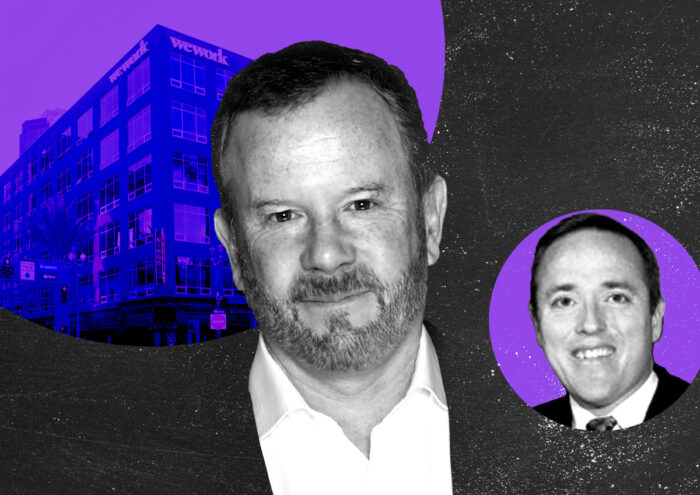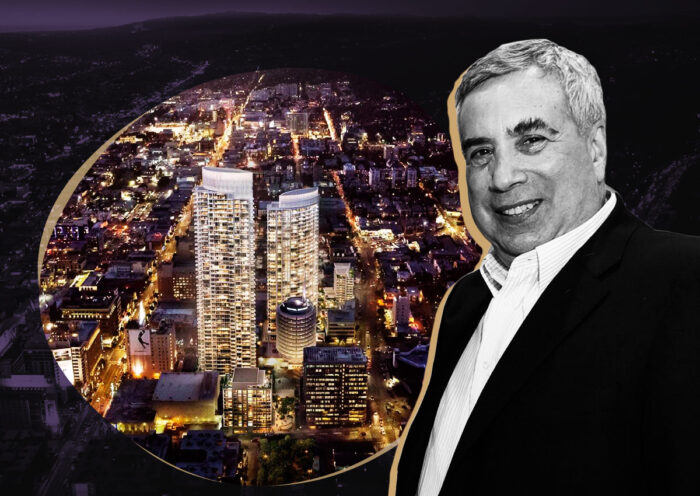Robert Khodadadian | Commercial Observer
For those Passover-observant readers of Commercial Observer, by last Tuesday night we were all in severe carb withdrawal. After a week-plus of no bread, we felt a little like Lloyd Bridges in Airplane.
Well, PopUp Bagels (a chain that’s backed by Paul Rudd, Michael Phelps and pro football players J.J. and T.J. Watt) has heard the call: Last week they signed a 1,782-square-foot lease and will be rolling into Aryeh Realty’s 1457 Third Avenue.
More than just PopUp Bagels, it was a good week for food — and maybe retail in general.
On the wider retail front, part of New York’s state budget that was laid out last week included $40 million to help combat organized retail theft, which has reached epidemic proportions. Plus, the legislation will raise assaulting retailers from a misdemeanor to a felony.
“This is not one person running and grabbing a candy bar. We know that these are transnational criminal organizations that are using the Internet [as a] marketplace,” said Gov. Kathy Hochul announcing the push. “We’re also making it illegal to foster the sale of stolen goods. … We’re going to make sure that prosecutors can charge third-party sellers who are profiting off the misery of our stores.”
Oh, and on Friday we learned that the Atlanta-based retailer Floor & Decor is taking 129,000 square feet at 850 Third Avenue in Sunset Park, Brooklyn, space vacated by Bed Bath & Beyond. (Yes, you read correctly: 129,000 square feet!) If that isn’t a good retail deal, we give up!
But there were other sweet deals that were announced last week that we had longed for in the days of matzo and charoset.
I’m Donut?, the famed Japanese doughnut purveyor, announced its first overseas lease at Bow Tie Properties’ 154 West 45th Street in Times Square.
Van Leeuwen, the ice cream maven, scooped up its second lease in Greenpoint, Brooklyn.
City Winery took an additional 14,600 square feet at Pier 57 to apparently open three new dining options.
And JKS Restaurants — Jyotin, Karam and Sunaina Sethi’s British-based restaurant group behind names like Gymkhana and Kitchen Table — is opening a 7,900-square-foot eatery at 1245 Broadway. (Their first in New York. No word yet on the details of the restaurant.)
The retail deals were not only in New York either: Clay Conley, Sam Slattery and Oliver Quinn’s James Beard-nominated restaurant Buccan is opening a new 10,000- square-foot outpost in Palm Beach.
Of course, this is not to say that everything’s perfect with retail.
There’s a struggle over the future of the Houston-based shopping mall company Whitestone REIT. Bruce Schanzer of Erez Asset Management is currently making a push to get on the board and steer the REIT (whose stock is virtually unchanged from what it was back in 2010) in a different direction.
And, after an extremely decent 2023, there was some grim reporting on Los Angeles-based Macerich, which netted $127 million in losses last quarter and defaulted on a $300 million loan tied to its outdoor shopping center Santa Monica Place.
Back to New York
Now that the dust has settled a bit on New York’s $237 billion budget deal, it’s beginning to look like … a pretty good deal for developers!
New York City was pushing for zoning changes to make office-to-residential conversion easier, a denser allowance for units on residential lots, and incentives to restart stalled projects — which the city seemed to have received.
“It’s definitely worth celebrating, but now it’s really time to roll up our sleeves and create a modern zoning envelope that will allow for the creation of more housing in the city,” said Adolfo Carrion Jr., commissioner of the city Department of Housing Preservation and Development. “We’re happy with what we came home with, knowing that permits for construction were way down and the housing vacancy rate is the lowest it’s been since we started tracking in the 1960s.”
Moreover, we were buoyed to learn that Miki Naftali has already thrown down with five 22-story residential towers he’s planning along the Williamsburg waterfront.
Yes, yes … he was certainly planning this well before the state budget deal. Still, good news is good news. It’s almost enough to make us forget about the fact that the Fed signaled that it wasn’t going to be pushed into lowering interest rates anytime soon.
‘I shot J.R.!’
In the middle of last month, Commercial Observer dropped by Santander Tower in the Lone Star State to host our first investment forum in Dallas.
A terrific collection of panelists and attendees included Sondra Wenger of CBRE, Tony Fineman of Acore, Jay Porterfield of PGIM Real Estate and many others who discussed the state of the market — and Dallas specifically.
“Occupancy rates remain 1 percent below the long-term average,” said Mark Roberts of Crow Holdings Capital. “That’s a big deal. … Dallas, I think it will continue to be a magnet for investor capital.”
Indeed, it is a ripe time to take a good, long look at Texas given that some 200 companies have relocated there in the last decade, and this got us looking at the Dallas office market, which is a lot healthier than other major metropolitan areas.
“Dallas is a headquarters town, maybe more so than even a place like Austin,” according to the University of Texas at Austin’s Steven Pedigo. “Its core business functions kind of depend on corporate real estate. These large brands, Fortune 500 companies, have a corporate identity. And with that comes the need for a lot of space.”
That has meant big offices for the likes of Frito-Lay, PepsiCo, Pizza Hut, Bank of America, Goldman Sachs and many, many others.
Dallas is even going after what had traditionally been Austin’s territory in the state: proptech.
In the last four years, some 17 proptech companies have put down stakes in Dallas. “Since then, $2.3 billion has been invested in equity rounds in proptech companies, with $450 million invested in Dallas-Fort Worth-based proptech companies, and $860 million invested in Austin-based proptech companies,” according to Ashkán Zandieh of the Center for Real Estate Technology and Innovation.
And, while there have been some oversupply issues in Dallas’ multifamily market, it is actually poised for a turnaround.
“We saw a surge in demand coming out of 2021, and a dramatic pullback in 2022,” said Bill Kitchens of CoStar (CSGP). “In the time since, we’ve been looking for demand to come back in a meaningful way. In the first quarter, we’re beginning to see the first signs of that demand coming back into Dallas-Fort Worth.”
Some 4,700 renters signed leases in Dallas in the first quarter of 2024 (according to CoStar) and while occupancy ticked up, this is largely because a massive amount of new supply came onto the market.
“Four million people came to Texas in the last 10 years, 3 million came to Florida and a million came to Georgia,” said Trammell Crow’s Adam Saphier, who just took over its Texas office on May 1 and spoke to CO for our Sit-Down. “Said another way, 22 percent of the nation’s population growth was in Texas.
“That momentum appears to be growing, which leads us to be very bullish that there will be continued job and population growth in all of Dallas, Houston and Austin going forward.”
Definitely something to chew on during this day of rest.
See you next week!
Robert Khodadadian has long had a simple philosophy about selling real estate. The way he sees it, there are approximately a million buildings in the city, and the broker that gets to sell any one among the multitude that will hit the auctioning block at a given moment is, sometimes, simply the person who happens to pitch their services to the right seller at the right time.
Robert Khodadadian, skyline properties, ground leases, off market, investment sales, Commercial Real Estate, Commercial Observer
Read MoreChannel, Features, More, 154 West 45th Street, Ashkán Zandieh, Buccan, Center for Real Estate Technology & Innovation, City Winery, Clay Conley, I’m Donut?, JKS Restaurants, Jyotin Sethi, Karam Sethi, Kathy Hochul, Oliver Quinn, Pier 57, PopUp Bagels, Sam Slattery, Sunaina Sethi, Van Leeuwen, National, Colliers, CoStar, Trammell Crow Company, Whitestone REIT Commercial Observer

















